UBER UPS
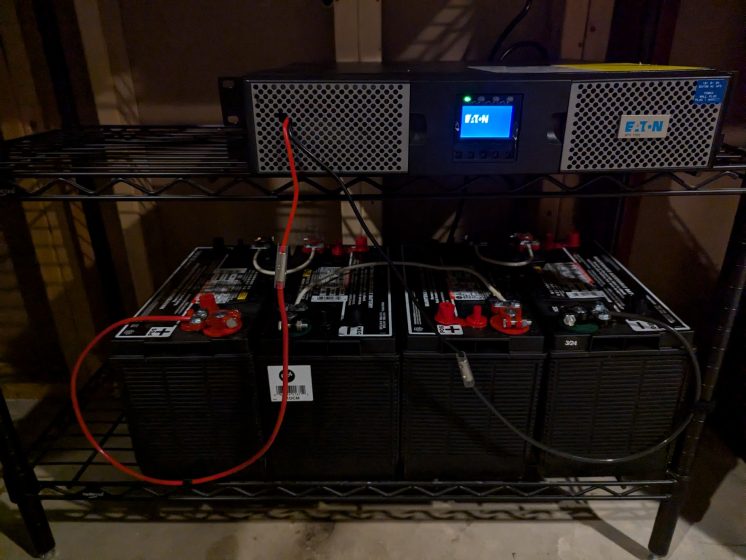
Tired of brief power outages knocking me offline once a month or so, I decided to invest in a couple entry level UPSs. These worked perfect for nearly all of the power outages, but about once a year we lose power for 90 minutes or more. The most I can recall was about 5 hours, but the last one happened in the middle of the day and lasted just shy of 2 hours. Because I have one of the UPS fairly loaded it lasted less than 10 minutes before it gave up.
I had a meeting coming up where it was expected that I be on camera. In the end the power came back on JUST in time to make the meeting and in the interim I tried various options like connecting my laptop to a 5G hotspot but that wasn’t working either. Not too long after that some severe storms came through the area that didn’t manage to knock my power out, but left many others without power for over a day.
It is hard to justify spending hundreds (or even thousands) of dollars on a backup/contingency plan, but I decided I wanted to upgrade to something better. Initially I was leaning towards purchasing a small generator that I could manually start and connect to my UPS. This would roughly simulate how a datacenter maintains power through a utility power failure. Fall back to UPS battery power and then switch the feed to the generator instead of utility power.
The other way to go about it is upgrading the batteries to ones large enough to meet your goal. Yes, even large batteries will run out of power long before a generator but eventually a generator will run out of fuel and quit too. I was fine with proceeding either way but generators shot up in cost as many others had the same idea as me. Meanwhile, a battery solution sorta fell in my lap. I came upon a free Eaton 1500va UPS that had been more or less destroyed in shipping. As they say; one man’s trash is another man’s treasure.
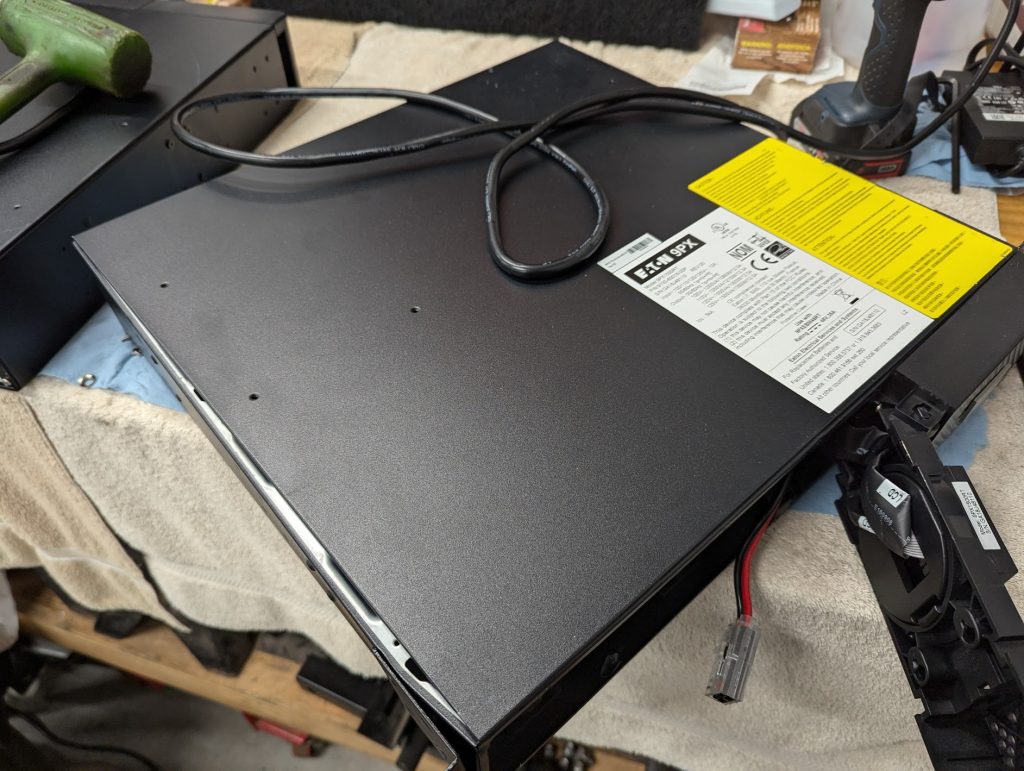
The whole chassis was bent where the battery pack sits. I took it apart and massaged it back into shape with an assortment of blunt objects and to my surprise the battery pack took a charge…or so it appeared. After letting it charge for 24 hours I applied a light load and it initially reported almost 3 hours of runtime but within a couple minutes it shut off.
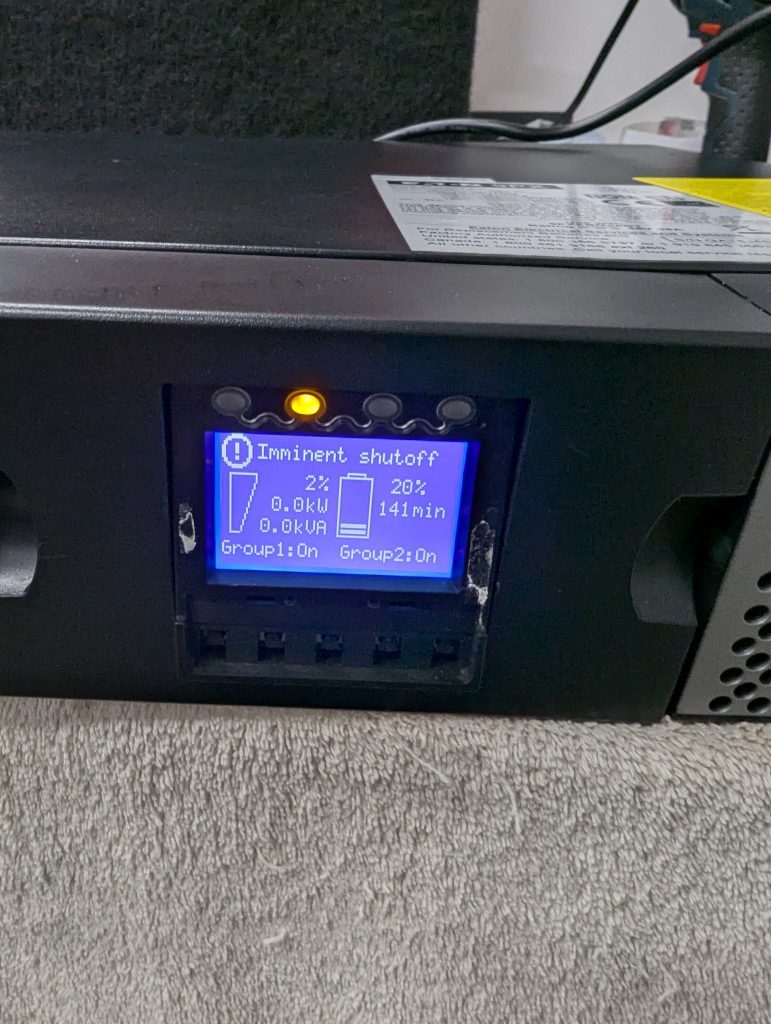
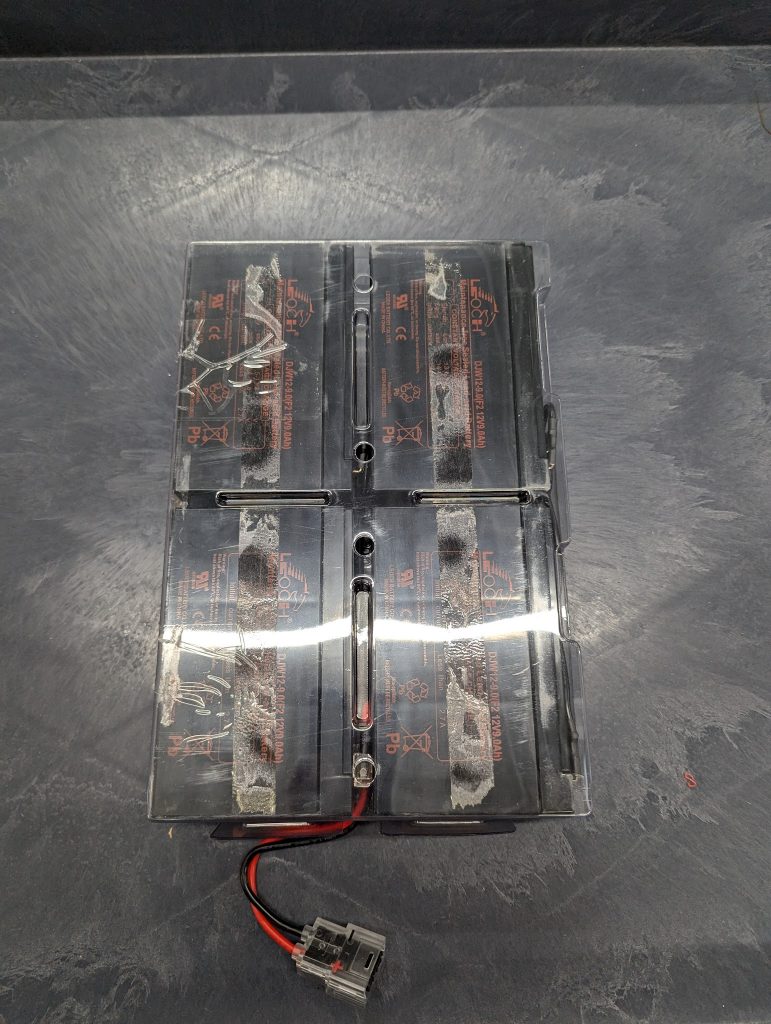
The internal battery pack in the UPS was 4 9 amp hour 12v lead acid batteries wired up in series. I shopped around for battery options and settled on 4 100 amp hour deep cycle lead acid batteries from O’Reiley’s as it was by far the best price/performance I could find.
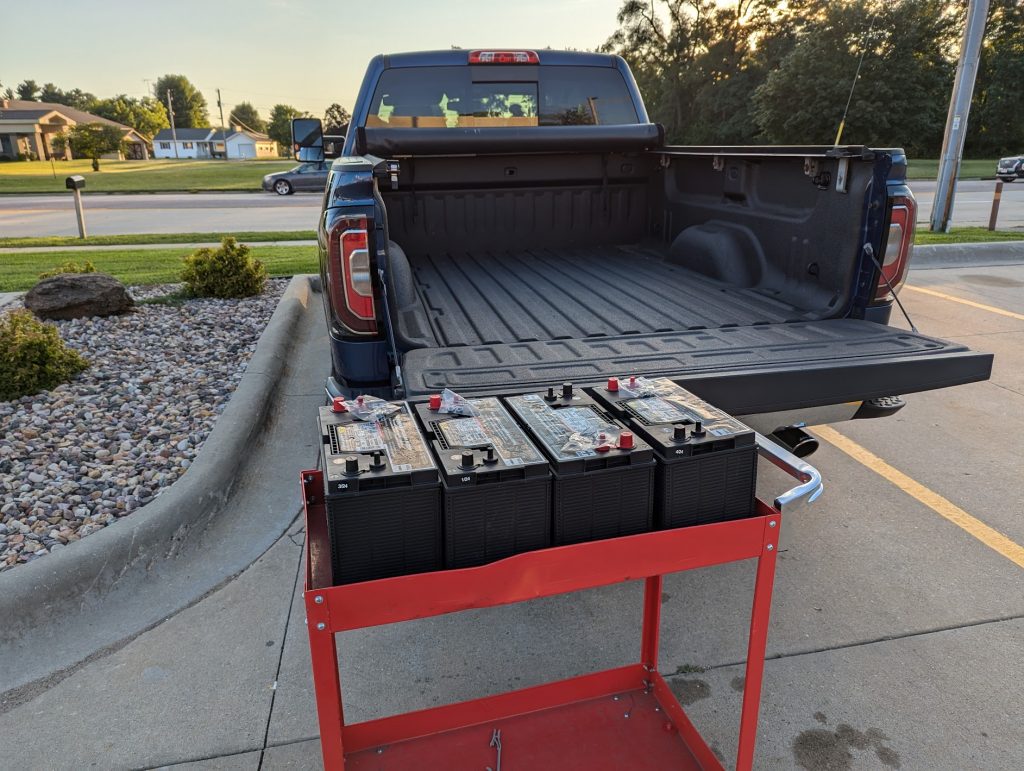
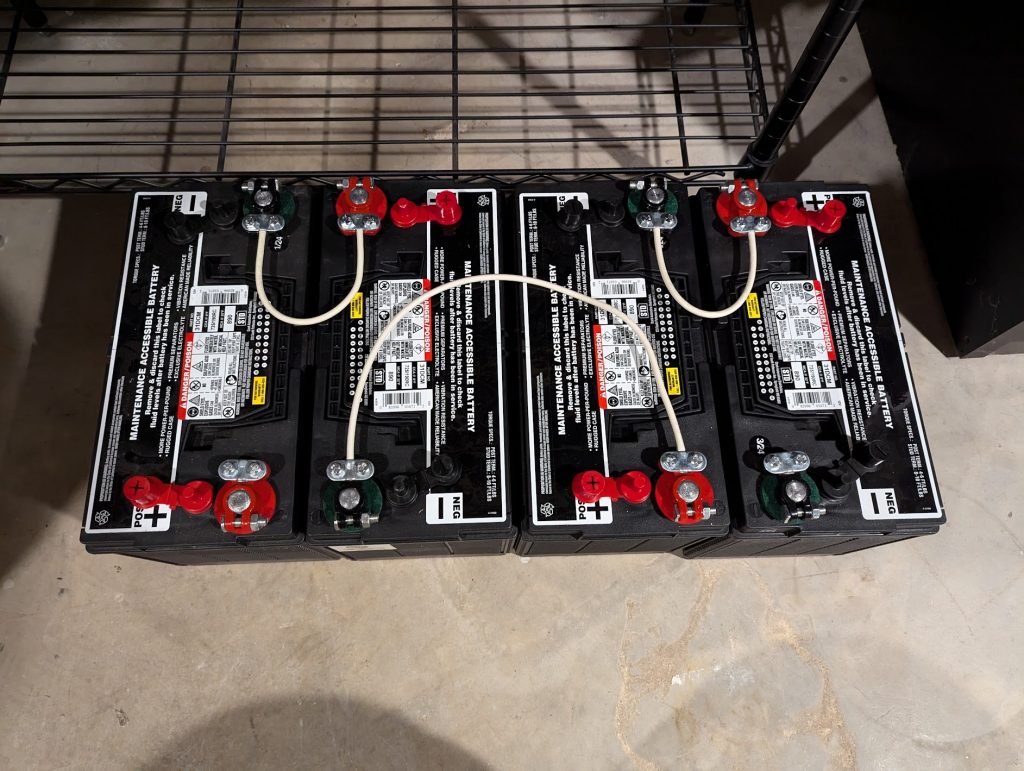
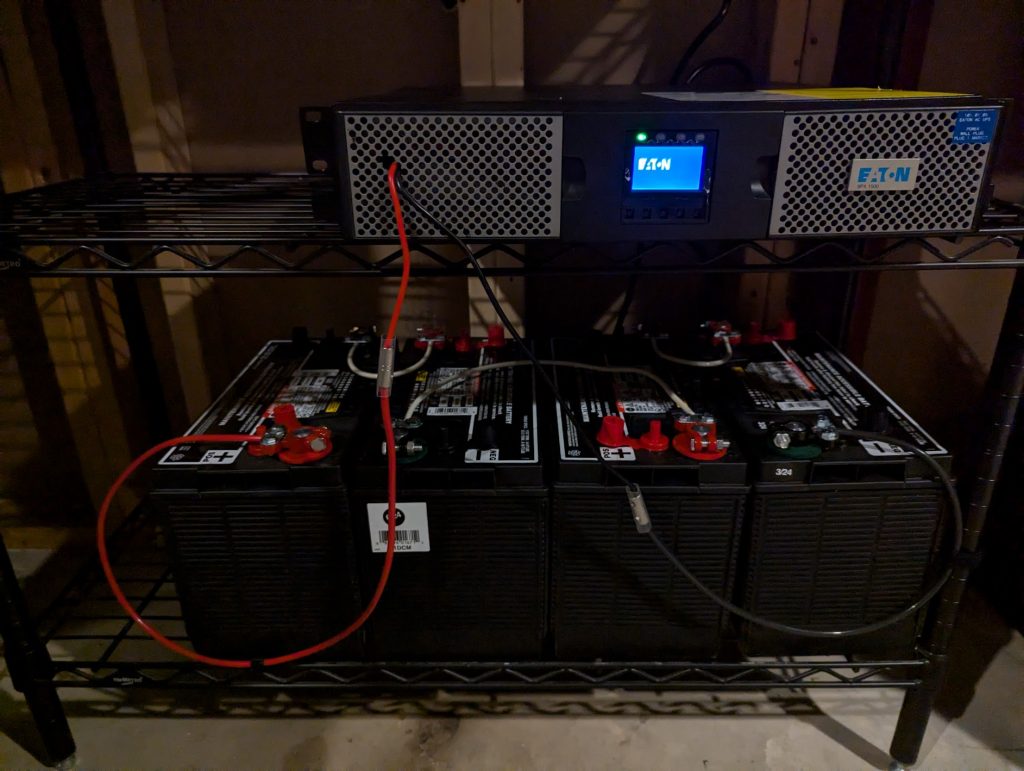
I ordered some battery terminal connectors and reusable butt joints and wired the batteries up in series with some 8 gauge wire I had leftover from building the shop. Since these batteries obviously don’t fit inside the chassis, I remove the connector from the original battery pack, cut a hole in the bezel, ran the wires out spliced them onto the 8 gauge leads.
Next I let the system charge for a day and then I connected my network rack and Proxmox server to it. The reported 120vac load is 300 watts. I then unplugged the UPS from the power outlet and crossed my fingers that it would all work as planned!
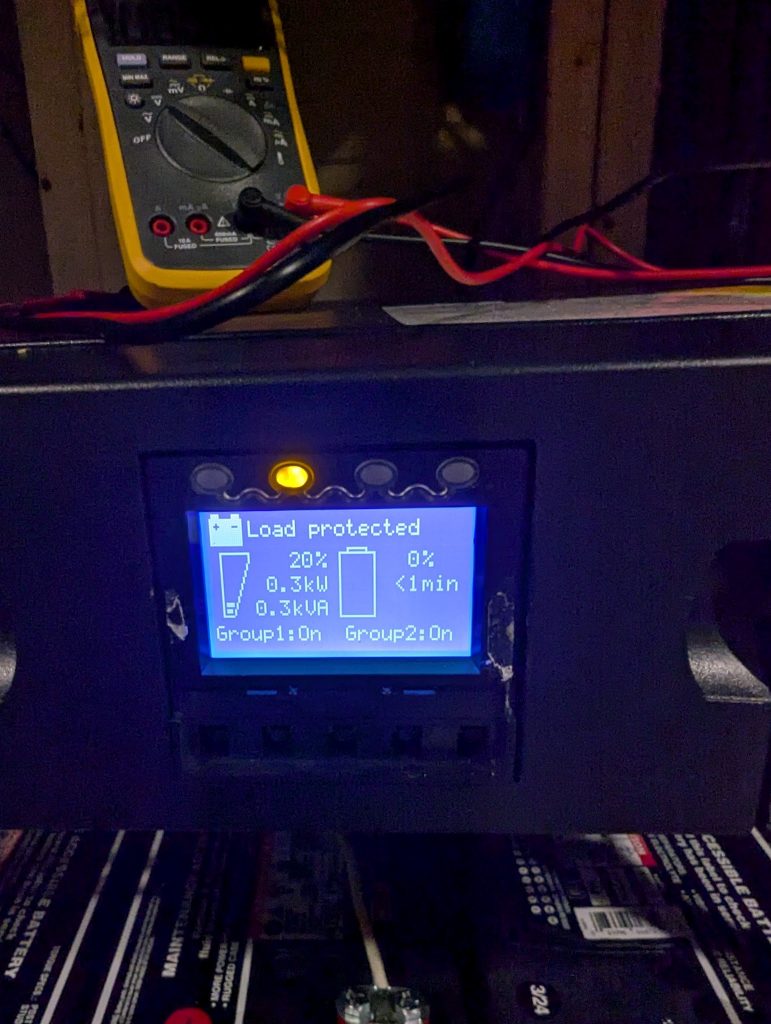
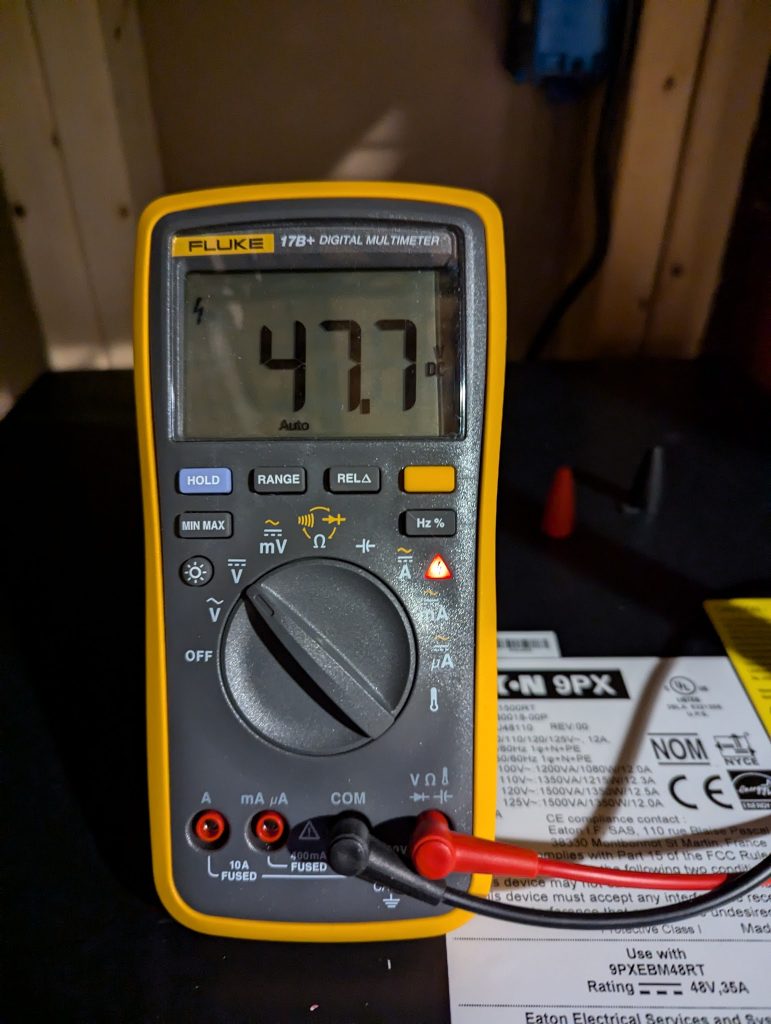
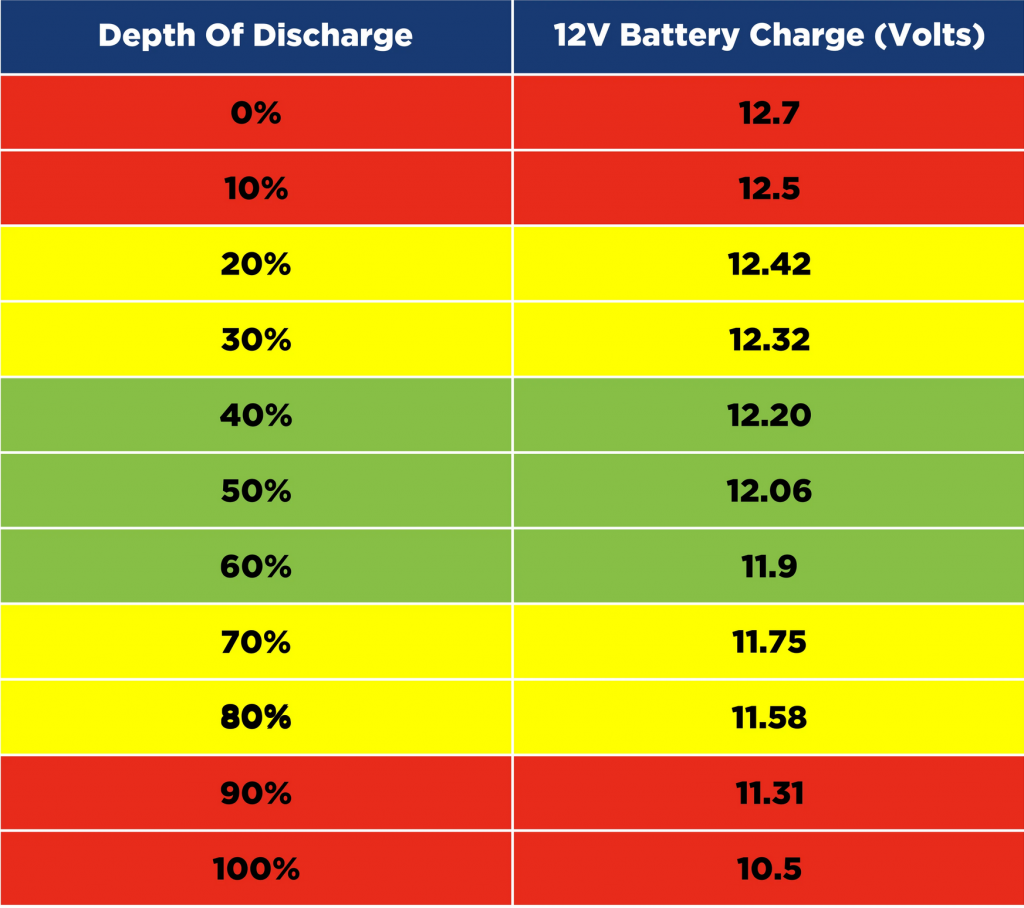
The UPS estimated a runtime of 45 minutes. After 45 minutes it reported < 1 minute runtime remaining. I remained within earshot of the warning beeps that were now playing every 3 seconds as I went about my evening. At 2:30am with the batteries down to 47.7v (an average of 11.925v per battery) I decided to call it a resounding success and plugged the UPS back into the power outlet. According to various charts I looked up, the batteries still had 40% charge remaining, although I was unable to find information as to what voltage the UPS is designed to turn turns off at.
I am very pleased with the result and unless we start having power outages > 4 hours I don’t see a need to invest in a generator.